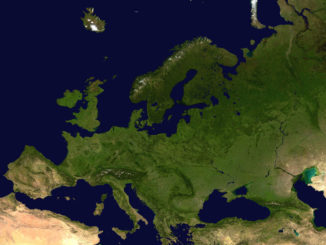Spring is the flea market period. Celebrating the CAP’s 50th birthday this year, DG Agri has added archives on the CAP to its website. For the 1992 reform, one of the key documents – The development and future of the CAP issued in 1991 – presents an interesting suggestion that echos the current development of CAP reform proposals for 2020.

In 1991, degressivity of aid was worded as ‘modulation of support in function of the size of holding‘. As everyone knows, the degressivity of aid, as with capping, has been strongly rejected by the Council of Agricultural Ministers since 1992.
Below we extract the EC argumentation against the critics to the degressivity from its 1991 reflection paper (Find the full document here: Modulation 1991 CAP reform).
Notwithstanding the decoupling of aid and the decrease of price supports, the background of this paper remind a well-known chorus that no CAP reform has been successful in changing over the last two decades:
“Income support, which depends almost exclusively on price guarantees, is largely proportionate to the volume of production and therefore concentrates the greater part of support on the largest and the most intensive farms. So for example, 6% of cereals farms account for 50% of surface area in cereals and for 60% of production; 15% of dairy farms produce 50% of milk in the Community; 10% of beef farms have 50% of beef cattle. The effect of this is that 80% of the support provided by the FEOGA is devoted to 20% of farms which account also for the greater part of the land used in agriculture. The existing system does not take adequate account of the incomes of the vast majority of small and medium size family farms.”
Farmers are not on an equal footing
“The argument that the modulation measures are discriminatory is somewhat misleading insofar as it is based on a rather strange concept of equality. The diversity of agricultural structures in the Community is such that farmers are not on an equal footing. In such conditions the logic of support through public funds aim at correcting inequalities by supporting those who derive fewer advantages from the market organisations.This is reflected in Article 39 of the Treaty.“
It is the market organisations as they function now that are discriminatory, insofar as the bigger and more intensive the farm the greater the support, a situation which should not apply were competitiveness to be the object.”
Competitiveness can no longer be measured in function of receipts from FEOGA
“The argument in relation to the anti-economic nature of the modulation of support measures is not valid either. The Commission remains committed to providing a framework which recognizes the role of efficient farms especially in relation to competitiveness on world markets.”
“After 30 years of the CAP, competitiveness can no longuer be measured in function of receipts from FEOGA. It’s precisely because the larger farms are now in a position to produce with reduced support that it is possible to envisage the development of the policy as suggested. This is not a question of penalising and blocking their development but of introducing a better balance between support from public funds and economic capacity”.
“The object is to make farms with the necessary capacity even more competitive. This will be reflected in somewhat less support for these farms and in a new balance between price support and direct aid”.
Birthdays are an opportunity to bring up memories that have been buried. We hope that concrete modalities that aim to better balance EU aid among farmers do not fall into a new oblivion in the coming months of negotiations among the Council and the Parliament.
Otherwise, what exactly is a CAP reform if nothing changes?





